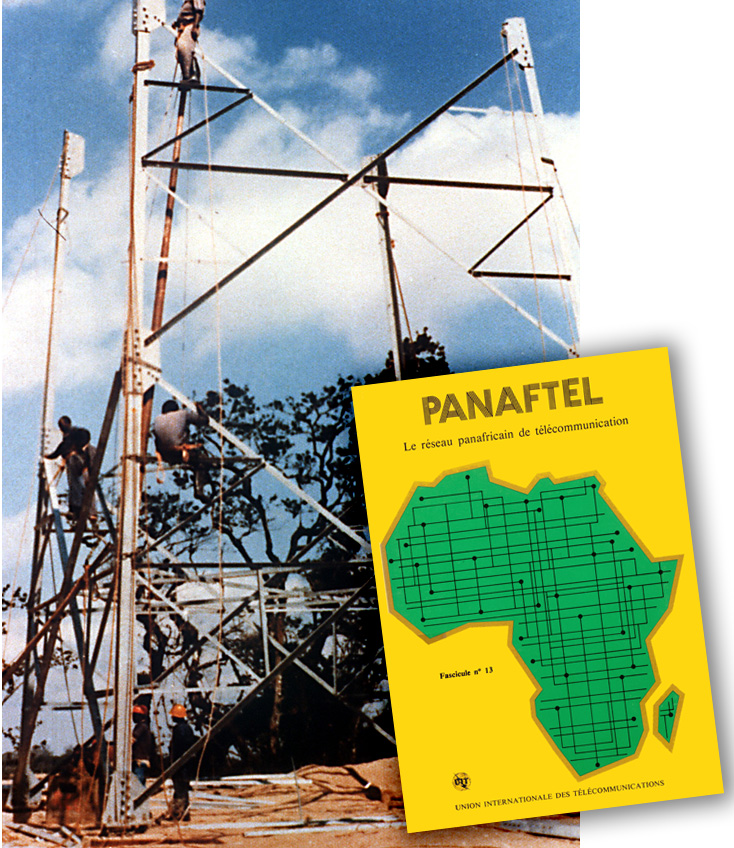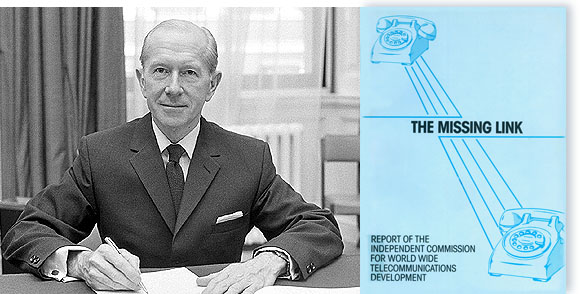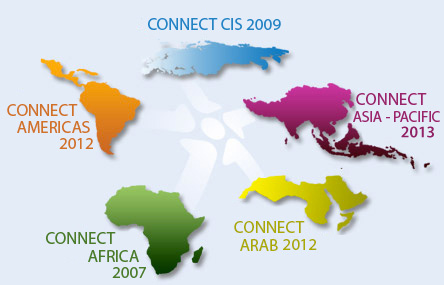The need to support the expansion of telecommunications has long been recognized. In 1952, ITU became an official participating organization in the UN Expanded Programme of Technical Assistance. The aim was to recruit and send experts to developing countries to help in various technological fields, as well as to support the training of local personnel. In 1959, ITU took over the management of its technical assistance schemes for telecommunications, with a department for that purpose created the following year.
 Construction of a repeater for the PANAFTEL network (Source: Fujitsu) Construction of a repeater for the PANAFTEL network (Source: Fujitsu) |
The UN Expanded Programme of Technical Assistance was merged with the UN Special Fund, forming today’s United Nations Development Programme, or UNDP, which began operation in 1966. ITU’s collaboration with UNDP increased markedly from that period. Alongside the objectives of improving technical, administrative and human resources in developing countries, the goal was to promote the expansion of networks in Africa, Asia and Latin America (as well as regional networks there and in the Asia- Pacific and the Middle East). From the 1970s, projects such as the Pan-African Telecommunications Network (PANAFTEL) and the Middle East and Mediterranean telecommunication master plan (MEDARABTEL) were implemented.
An important step forward was taken in 1982, when the ITU Plenipotentiary Conference held in Nairobi set up the Independent Commission for World-Wide Telecommunications Development. It began work in 1983 under the chairmanship of Donald Maitland and submitted its report in 1985. Officially titled The Missing Link, and also known as the Maitland Report, the report showed how access to telecommunications correlates with economic growth – but also drew international attention to the huge imbalance in such access between developed and developing countries.
 Sir Donald Maitland, Chairman of the Independent Commission for World-Wide Telecommunications Development (Source: PA) Sir Donald Maitland, Chairman of the Independent Commission for World-Wide Telecommunications Development (Source: PA) |
New ITU StructureAgainst a background of increasing globalization and the liberalization of telecommunication markets, the 1989 Plenipotentiary Conference, held in Nice, decided that ITU’s structure and working methods needed to be reviewed. As a result, an Additional Plenipotentiary Conference, in Geneva in 1992, streamlined ITU into three Sectors: Telecommunication Standardization (ITU-T), Radiocommunication (ITU-R), and Telecommunication Development (ITU-D). |
In response to the ground-breaking report, ITU held its first World Telecommunication Development Conference in 1985, in Arusha, Tanzania. In 1989, the ITU Plenipotentiary Conference in Nice recognized the importance of placing technical assistance to developing countries on the same footing as its traditional activities of standardization and spectrum management. To this end, it established the Centre for Telecommunication Development (later incorporated into ITU’s Telecommunication Development Bureau in 1991).
Bridging the digital divide was confirmed as a priority for ITU at the Marrakesh Plenipotentiary Conference in 2002, which also authorized ITU to take a leading role in the preparations and follow-up of the World Summit on the Information Society (WSIS).
WSIS was the first ever gathering of global leaders to address how best to create a safe and truly inclusive information society. The summit was held in two phases: in 2003 in Geneva and in 2005 in Tunis. Participants came from 175 countries, including some 50 Heads of State and Government and vice-presidents. Its outcome documents, including the Geneva Plan of Action and the Tunis Agenda for the Information Society, address such issues as the use of information technologies for development; cybersecurity; affordable access to communications; infrastructure; capacity building, and cultural diversity.
 |
The summit also resulted in the multi-stakeholder WSIS Forum, held annually since 2009 to review progress in achieving the summit’s goals. As another follow-up to WSIS, the Connect the World series of regional conferences was launched by ITU to mobilize technical, financial and human resources for telecommunication development. The first event was the Connect Africa Summit, hosted by Rwanda in 2007.
ITU holds regular seminars and training events, and since 2000 it has organized the annual Global Symposium for Regulators. This provides a unique meeting place for regulators and policy-makers from both developed and developing countries. Efforts to encourage greater participation by developing countries in creating and adopting technical standards are focused on ITU’s Bridging the Standardization Gap programme, established in 2008.
